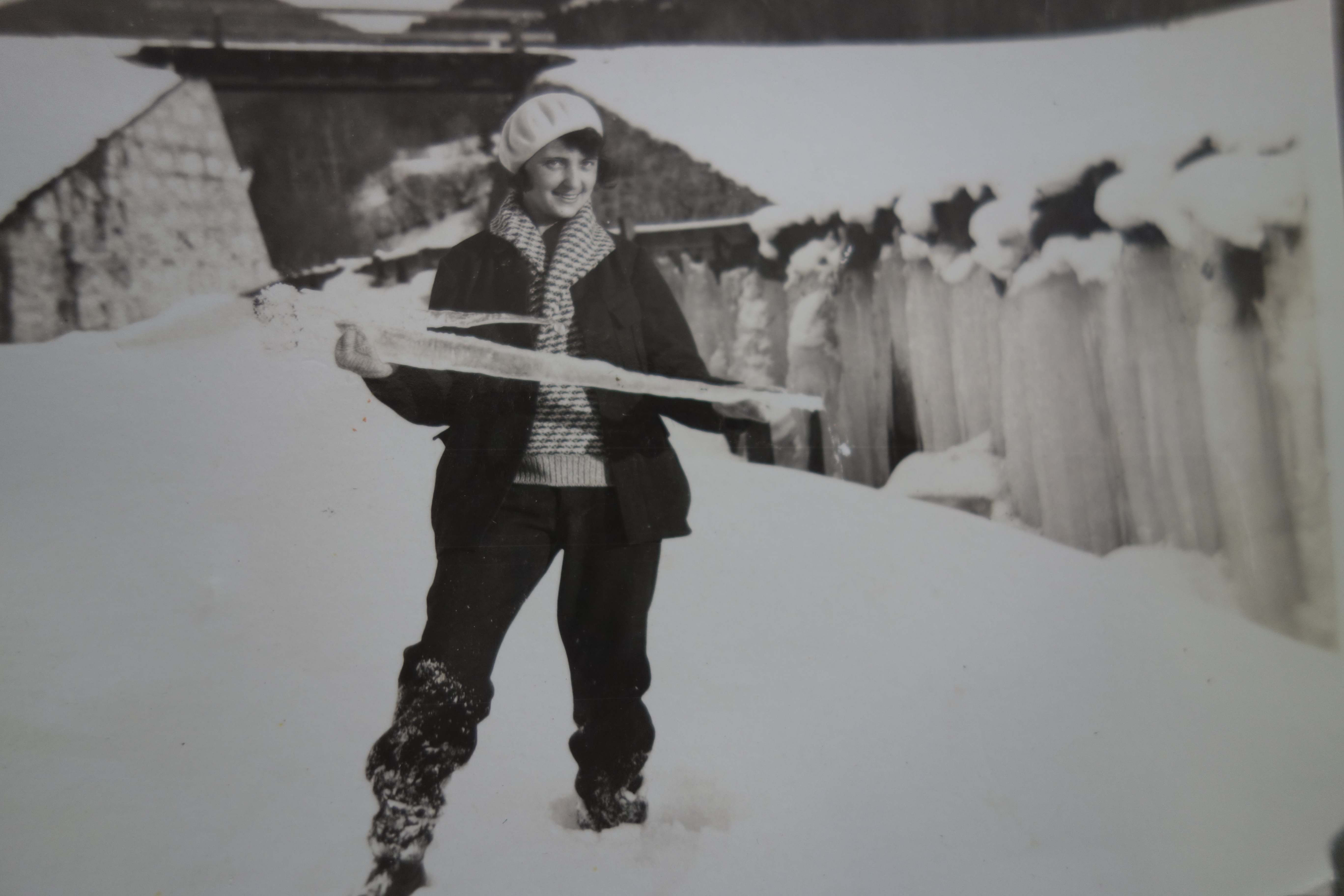THE ALPS: PAST TIME OF THE YOUNG VIENNESE IN THE 1920s & 1930s

My grandmother Lola, Semmering 1931
My grandparents’, my great-uncles and great-aunts’ favourite leisure time activities on weekends and during holidays was hiking in the Vienna Woods, the last part of the Alps in the east, and the mountains south of Vienna, such as, Rax, Schneeberg, Gippel, Göller und Semmering and for longer vacations the whole area of the Austrian Alps, Southern Tyrol, Bavaria and Switzerland. How did that overwhelming passion for mountaineering and skiing among the younger Viennese generation in the 1920s and 1930s develop? Alpinism had evolved from an elitist sport of wealthy British tourists to the bourgeois leisure activity of “Sommerfrische” (summer holidays in the Alps) and a sport of intellectual and artistic circles in the 19th century to a widespread working class past time, too, in the 1st Austrian Republic (1919-1934/38).
Many of the beautiful black and white photos of hiking tours in the Austrian Alps were taken by my great-uncle, Karl Elzholz, a mechanic at the Viennese tramways, an atheist, a committed socialist and a member of the Alpine club “Naturfreunde”. He was married to my great-aunt, Mizzi, and later to her sister, my great-aunt, Käthe, and both of them were dedicated hikers as well and formed part of the groups of friends who went hiking in the vicinity of Vienna or on longer mountaineering tours to the Alps. They were experienced hikers and planned the tours themselves.
In the 19th century workers organised educational clubs because that was sometimes the only way to legally form workers’ associations. Later workers’ gymnastic clubs were established along the lines of German nationalist gymnasts’ associations, the “Turnerbewegung”. The aim of these clubs was to improve the health and fitness of the workers with the help sports activities and especially the exposure to “air, light and sun” was seen as beneficial. As a consequence those clubs soon moved out of the stuffy rooms of gyms into nature. That’s when walking and hiking became a popular leisure time activity of the working classes, too. In 1895 the Alpine club “Naturfreunde” (Nature’s Friends) was founded. Soon afterwards also skiing was made popular among the working class. Emmerich Wenger brought skis from a trip to Norway to Vienna and they tried them out at the “Bierhäuslberg” to the amusement of all present. After the First World War all workers’ sports clubs united under the umbrella organisation ASKÖ (“Arbeiterbund für Sport und Körperkultur in Österreich”). In 1931 the 2nd Workers’ Olympic Games took place in Austria, initiated by the ASKÖ: in February in the Semmering area and in July in Vienna in the newly erected stadium in Prater. In 1934 with the takeover of the Austro-fascist regime all workers’ clubs were declared illegal and only after the end of World War II the socialist sports organisation ASKÖ could be reactivated.
…
